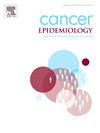Impact of GLP-1 receptor agonist-induced weight loss on 22 cancers in the next ten years using a Markov state-transition model – A UK weight and wellness cancer landscape analysis
IF 2.3
3区 医学
Q3 ONCOLOGY
引用次数: 0
Abstract
Background
Obesity is a major risk factor for many cancers. Glucagon-like peptide-1 receptor agonists (GLP-1RA) have emerged as highly effective agents for weight loss. There is a lack of published modelling studies describing the broader implications of GLP-1RA-induced weight loss on cancer incidence.
Methods
A Markov state-transition model was devised to evaluate the impact of GLP-1RA-induced weight loss on future cancer incidence in adults. Contemporary data on weight distribution, cancer incidence, and body mass index (BMI)-associated cancer risk were integrated into the model. Two scenarios were assessed, GLP-1RAs were made available to all people with obesity (BMI>30) or only those with severe obesity (BMI>35). New cancer cases were simulated over a decade.
Results
Our simulation within a closed cohort indicated that GLP-1RA-induced weight loss would lead to a marked decrease in cancer cases over 10 years in adults. If GLP-1RAs were made available for all people with obesity and 50 % of people with obesity moved into a lower BMI category, there was a simulated reduction in cumulative cancer cases of 21,443. If access to GLP-1RAs was restricted to people with severe obesity and 50 % of people with severe obesity moved into a lower BMI category, there was a simulated reduction in cumulative cancer cases of 7476. This effect was greatest for uterine, kidney, liver and colon cancer.
Conclusion
Targeted weight control measures using GLP-1RAs could reduce new cancer cases. Based on our models, the potential risk of thyroid cancer is balanced by a reduction in other cancer types. This modelling study shows for the first time that implementing effective weight loss programmes could enhance the health of the population over the next decade through a reduction in cancer cases.
GLP-1受体激动剂诱导的体重减轻对未来十年22种癌症的影响,使用马尔科夫状态转换模型-英国体重和健康癌症景观分析
背景:肥胖是许多癌症的主要危险因素。胰高血糖素样肽-1受体激动剂(GLP-1RA)已成为减肥的高效药物。目前还缺乏已发表的模型研究来描述glp - 1ra诱导的体重减轻对癌症发病率的更广泛影响。方法采用马尔可夫状态转移模型评价glp - 1ra诱导的体重减轻对成人未来癌症发病率的影响。有关体重分布、癌症发病率和体重指数(BMI)相关癌症风险的当代数据被整合到模型中。评估了两种情况,GLP-1RAs提供给所有肥胖者(BMI>30)或仅提供给严重肥胖者(BMI>35)。新的癌症病例被模拟了十多年。我们在一个封闭队列中的模拟表明,glp - 1ra诱导的体重减轻将导致10年内成人癌症病例的显着减少。如果所有肥胖者都能获得GLP-1RAs,并且50% %的肥胖者进入较低的BMI类别,那么累积癌症病例将减少21443例。如果对GLP-1RAs的获取仅限于严重肥胖人群,并且50% %的严重肥胖人群进入较低的BMI类别,则模拟减少了7476例累积癌症病例。对子宫癌、肾癌、肝癌和结肠癌的影响最大。结论应用GLP-1RAs进行有针对性的体重控制可减少癌症新发病例。根据我们的模型,甲状腺癌的潜在风险与其他癌症类型的减少相平衡。这项模拟研究首次表明,实施有效的减肥计划可以通过减少癌症病例,在未来十年提高人口的健康水平。
本文章由计算机程序翻译,如有差异,请以英文原文为准。
求助全文
约1分钟内获得全文
求助全文
来源期刊

Cancer Epidemiology
医学-肿瘤学
CiteScore
4.50
自引率
3.80%
发文量
200
审稿时长
39 days
期刊介绍:
Cancer Epidemiology is dedicated to increasing understanding about cancer causes, prevention and control. The scope of the journal embraces all aspects of cancer epidemiology including:
• Descriptive epidemiology
• Studies of risk factors for disease initiation, development and prognosis
• Screening and early detection
• Prevention and control
• Methodological issues
The journal publishes original research articles (full length and short reports), systematic reviews and meta-analyses, editorials, commentaries and letters to the editor commenting on previously published research.
 求助内容:
求助内容: 应助结果提醒方式:
应助结果提醒方式:


